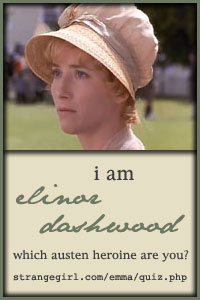1 day ago
Monday, April 9, 2012
The Greater Journey: Americans in Paris
For centuries, Paris has been the center of western culture. Art, medicine, fashion, cuisine, and intellectual thought have found (and continue to find) their epicenter in the city on the banks of the Seine. And as different as our two cultures are, perhaps no city on earth has as much allure and mystery for Americans as Paris. In his newest book, renowned historian David McCullough explores the lives of the many Americans in the 19th century who sought to improve themselves and their native country in the glittering and whirling capital.
The 19th century was one of great change for America. The early years of the century saw the first American-born generation turning to the Old World to learn from its cultures and apply them to the one they were creating. They were especially drawn to Paris and many went there to learn and to find excitement. Some went to study in the famous medical schools and would bring back many new innovations which would change medicine in America. Some, like James Fenimore Cooper, would spend their days writing adventures of life on the American frontier and their evenings strolling along the banks of the Seine. Others went to enjoy free access to the world's greatest collection of art in the Louvre and to hone their craft while studying from the masters. The book follows these Americans and the generations who came after as they each search for their own destiny.
This book was very enjoyable, not only for someone who loves Paris, but for someone interested in 19th century American history as well. What was most fascinating to me was how these Americans spent so much time in Paris (some the majority of their lives), and yet they never stopped identifying themselves as Americans. Cooper wrote many of his wildly popular "Leatherstocking Tales" in a house on the Rue St. Dominique, and yet you would never know it to read them. They seem to be written in a cabin in the backwoods of Kentucky. August St. Gaudens is most well known, not for art found in European museums, but for memorials to famous Americans. It was amazing to me how each of these people took the things they learned in Paris, and applied them with an American twist. Truly, this is not really a story of a few Americans, but of the influence that Paris had on a developing America.
That is not to say that the individual stories are not fascinating. I was especially intrigued by Samuel Morse, who is bet known as the inventor of the telegraph, but who spent most of his time in Paris studying art in the Louvre. I also enjoyed the story of Elihu Washburn who was the only foreign ambassador to brave out the Prussian siege of Paris and provided aid not only to the trapped Americans, but also to the suffering German population. And the stories of American artists like John Singer Sargent and Mary Cassat showed how even we could earn renown in the world of French art.
McCullough's writing is smooth, amusing, and accessible. It is definitely something that most people can get into. The only issue I could see is that Paris itself serves only as a backdrop for the stories of the Americans. We don't really get the nitty gritty stories of the city and it's people, and what we do get is seen through American eyes. Rather than being the center of the story, Paris serves as a link between the otherwise disconnected vignettes of life for famous Americans. That being said, this is still a fun and interesting read. A definite must for those who love Paris.
Subscribe to:
Post Comments (Atom)

















No comments:
Post a Comment